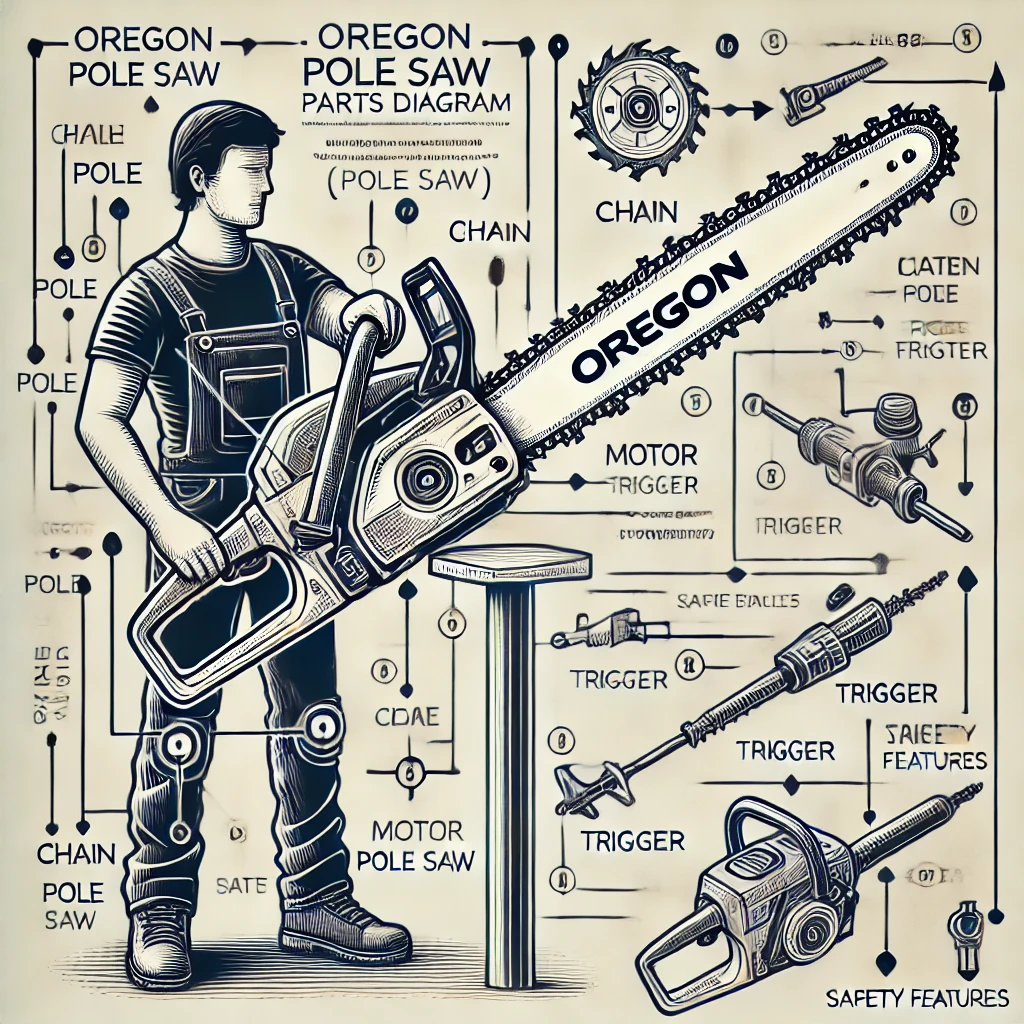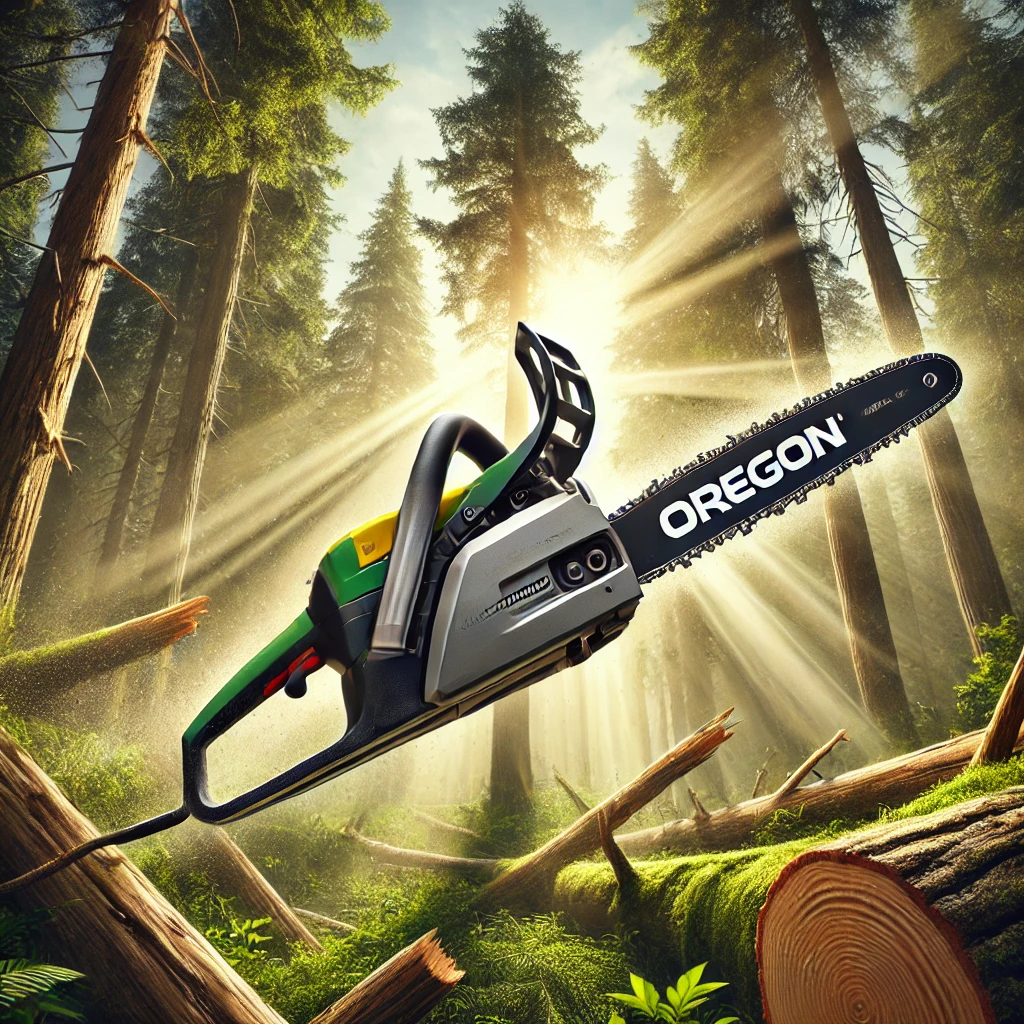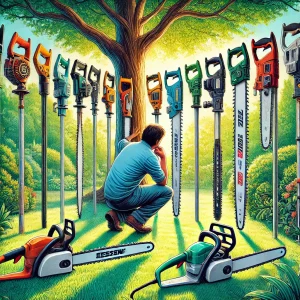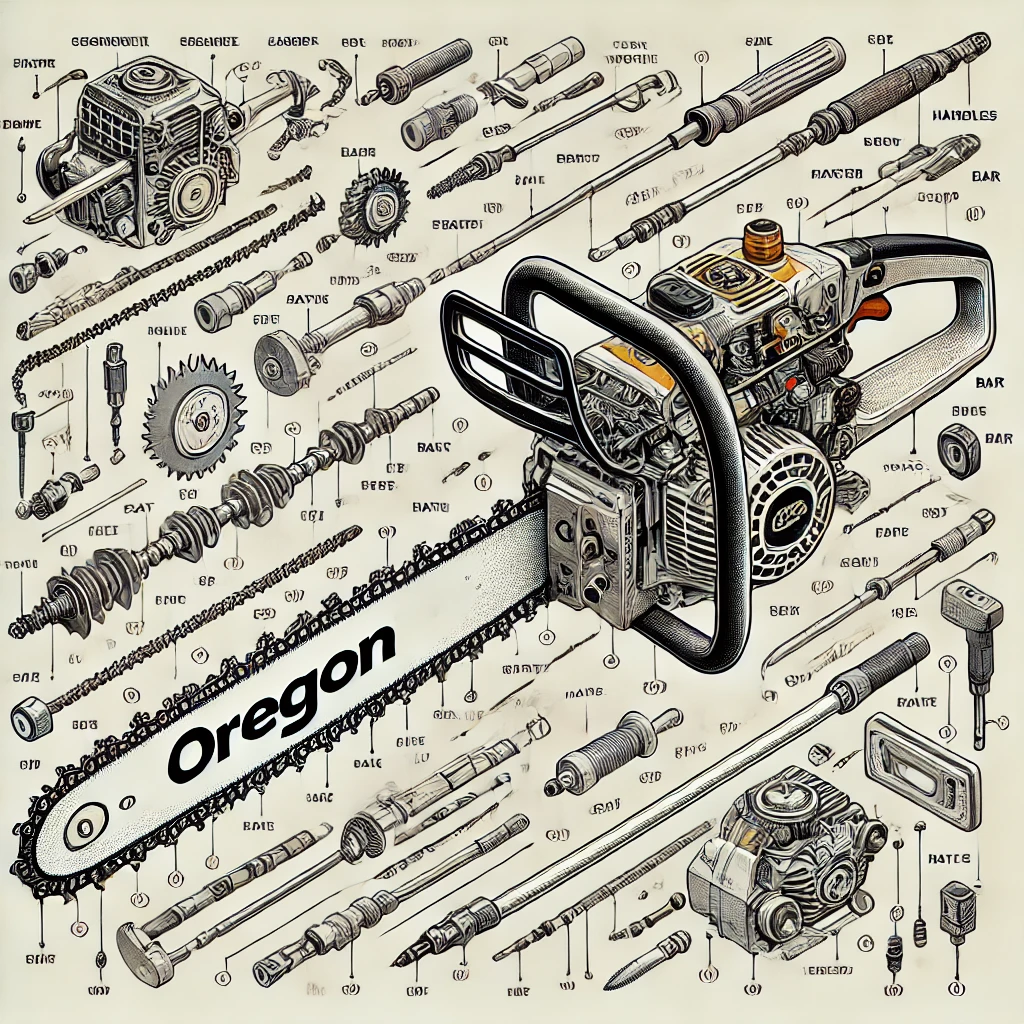Oregon pole saws are known for their durability and performance, making them a favorite among gardening enthusiasts and professionals. However, to keep your pole saw in optimal condition, it’s crucial to understand its parts and how they work together. In this guide, we’ll provide a detailed review of the Oregon Pole Saw Parts Diagram 2025, breaking down every component to help you maintain and repair your tool efficiently.
Table of Contents
Why Understanding the Parts Diagram is Essential
A well-maintained pole saw not only ensures efficient cutting but also enhances safety. The parts diagram acts as a blueprint, showing how each component fits together. Whether you’re troubleshooting a mechanical issue or replacing a worn-out part, a detailed understanding of the diagram saves time and prevents costly errors.
Pros
Cons
Key Components of the Oregon Pole Saw 2025
Below, we break down the most critical parts of the Oregon pole saw, based on the latest diagram for 2025.
1. Powerhead
The powerhead houses the motor or engine that drives the pole saw. Depending on your model, it can be:
- Electric Motor: Lightweight, eco-friendly, and ideal for home use.
- Gas Engine: Powerful, suitable for heavy-duty tasks but requires regular maintenance.
Tips for Maintenance:
- Clean the motor vents regularly to prevent overheating.
- Use only recommended lubricants to avoid damaging internal components.
2. Pole Assembly
The pole provides the extension necessary to reach high branches. Oregon poles are usually made from lightweight yet durable materials like aluminum or fiberglass.
Key Features:
- Telescoping Design: Adjustable length for versatile use.
- Non-Slip Grip: Ensures stability during operation.
Common Issues:
- Loose locking mechanisms can make the pole unstable. Always check and tighten before use.
3. Cutting Bar and Chain
This is where the actual cutting happens. The bar holds the chain, which spins to slice through branches.
Specifications:
- Available in lengths ranging from 8 to 12 inches, suitable for different cutting needs.
- Oregon’s low-kickback chains enhance safety.
Maintenance Checklist:
- Sharpen the chain regularly to maintain cutting efficiency.
- Check the chain tension before use to prevent accidents.
4. Chain Tensioner
The tensioner ensures the chain stays tight on the bar. An improperly tensioned chain can lead to poor performance or even damage the saw.
How to Adjust:
- Locate the tensioning screw near the bar.
- Turn clockwise to tighten or counterclockwise to loosen.
- Ensure the chain can move freely but doesn’t sag.
5. Oil Reservoir
The oil reservoir lubricates the bar and chain, reducing friction and preventing wear and tear.
Pro Tips:
- Use only Oregon-recommended bar and chain oil.
- Refill the reservoir before every use to avoid running dry mid-operation.
6. Safety Features
Modern Oregon pole saws include several safety features:
- Trigger Lock: Prevents accidental activation.
- Chain Brake: Stops the chain immediately in case of a kickback.
- Guard Plates: Protect your hands from debris.
How to Use the Oregon Pole Saw Parts Diagram Effectively

The parts diagram is more than just a visual tool; it’s a guide to troubleshooting, repairs, and upgrades. Here’s how to make the most of it:
- Identify Problem Areas: Locate the faulty part using the diagram.
- Order Genuine Parts: Refer to the part number listed in the diagram for accurate replacements.
- DIY Repairs: Follow step-by-step instructions to replace parts like chains, sprockets, or tensioners.
Where to Buy Oregon Pole Saw Replacement Parts
To ensure compatibility and durability, always purchase genuine Oregon parts. Trusted sources include:
- Official Oregon Website: Comprehensive catalog of all parts.
- Authorized Dealers: Certified outlets offering warranties.
- Online Retailers: Platforms like Amazon often have competitive prices.
Pole Saw Face-Off: Oregon vs Greenworks – Which Is Worth It?
When it comes to maintaining your yard or tackling overhead branches, pole saws are invaluable tools. Two of the most popular brands in the market are Oregon and Greenworks, each offering a variety of models with distinct features. But with so many options available, which brand truly stands out? In this comprehensive comparison, we’ll break down the pros, cons, and key differences between Oregon pole saws and Greenworks pole saws to help you make an informed decision.
Why Choose a Pole Saw?
A pole saw extends your reach, allowing you to trim and prune trees or bushes without the need for a ladder. Whether you’re a homeowner with a few trees or a professional landscaper, choosing the right pole saw can save time and reduce safety risks. The two brands we’re comparing today, Oregon and Greenworks, are both highly regarded for their reliability and performance.
Oregon Pole Saws: A Legacy of Power and Durability

Overview
Oregon is a well-known name in the outdoor power equipment industry, offering a range of pole saws built for heavy-duty use. Oregon’s pole saws are designed for professionals and homeowners alike, delivering power, precision, and durability.
Key Features
- Power Options: Oregon offers both cordless electric and gas-powered pole saws, giving you flexibility depending on your needs.
- Long-lasting Performance: Built with high-quality materials, Oregon saws are known for their robust performance and long lifespan.
- Ergonomic Design: Many Oregon models feature adjustable poles and comfortable grips, making them ideal for extended use without sacrificing comfort.
Pros
- Powerful Motors: Oregon’s gas-powered models are designed to handle tough jobs, making them ideal for cutting through thick branches.
- Versatility: Available in both electric and gas options, giving users the flexibility to choose based on power and convenience.
- Professional Quality: Oregon pole saws are built to last and can handle demanding work environments.
Cons
- Higher Price Point: Oregon pole saws tend to be more expensive, especially the gas-powered models.
- Heavier Weight: Some Oregon models, particularly the gas-powered ones, can be heavy, making them less ideal for users seeking portability.
You may also like
Greenworks Pole Saws: Eco-Friendly, Lightweight, and Efficient
Overview
Greenworks is known for its focus on sustainability and eco-friendly equipment, offering an array of cordless electric pole saws. They are perfect for homeowners who need a reliable tool for lighter trimming tasks around the yard.
Key Features
- Cordless Electric Power: Greenworks pole saws are powered by lithium-ion batteries, offering up to 60 minutes of continuous use on a full charge.
- Lightweight Design: Greenworks pole saws are built to be lightweight, offering users easy maneuverability and less strain during prolonged use.
- Easy Maintenance: With fewer moving parts and no gas to deal with, Greenworks pole saws require minimal maintenance.
Pros
- Eco-Friendly: Battery-powered, producing no emissions and quieter operation.
- Lightweight and Portable: Ideal for users who need something easy to handle and store.
- Affordable: Greenworks offers excellent value for the price, with most models being more affordable than Oregon.
Cons
- Limited Power: While Greenworks models are effective for light to medium tasks, they might struggle with thicker branches compared to gas-powered saws.
- Battery Life: Depending on the battery capacity, some Greenworks models may not last as long as their gas counterparts on a single charge.
Performance Comparison: Power, Durability, and Ease of Use
When comparing Oregon pole saws and Greenworks pole saws, there are several important factors to consider:
1. Power and Performance
- Oregon pole saws, particularly gas-powered models, offer more power, making them ideal for tackling thick, dense branches and heavy-duty tasks.
- Greenworks pole saws, powered by battery-operated motors, are best suited for light to medium trimming jobs, such as pruning small to medium-sized trees.
2. Weight and Portability
- Greenworks wins in the portability department. Their lightweight design and battery-powered options make them easy to handle and maneuver.
- Oregon pole saws, especially the gas-powered models, can be heavier, which may require more effort for users over extended periods of time.
3. Price and Value
- Greenworks pole saws are typically more affordable, making them a great choice for homeowners on a budget or those who don’t need heavy-duty performance.
- Oregon, while generally more expensive, offers premium features and long-lasting durability, making them worth the investment for those requiring a more powerful saw for frequent use.
Which Pole Saw is Right for You?

Choosing between Oregon and Greenworks depends largely on your specific needs:
- Choose Oregon if you need a powerful, durable pole saw for heavy-duty tasks. Oregon is ideal for professionals or homeowners with large properties who require consistent, high-performance equipment.
- Choose Greenworks if you’re looking for a budget-friendly, eco-friendly, and lightweight option for lighter pruning and trimming tasks around your yard. It’s perfect for homeowners who want something easy to use, with minimal maintenance.
FAQs About Oregon Pole Saw Parts
1. How often should I replace the chain? Chains should be replaced once they show signs of wear, such as dull cutting or difficulty maintaining tension. Regular sharpening can extend their lifespan.
2. Can I use third-party parts for my Oregon pole saw? While third-party parts might be cheaper, they may not offer the same quality or compatibility as genuine Oregon parts.
3. What type of oil is best for my pole saw? Always use bar and chain oil recommended by Oregon. Avoid motor oil, as it lacks the viscosity needed for effective lubrication.
Conclusion
The Oregon Pole Saw Parts Diagram 2025 is an invaluable resource for maintaining and repairing your pole saw. By understanding the functions and maintenance requirements of each component, you can keep your tool in top shape for years to come. Whether you’re a beginner or a seasoned user, this guide ensures you’re equipped with the knowledge to get the most out of your Oregon pole saw.



Leave a Reply